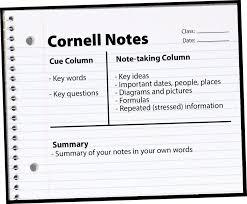Cornell Method: How to take notes
- Write down the lecture name/seminar/reading topic at the top of the page.
- Write down notes in the largest section of the page (right-hand column). Transcribe only the facts using bulleted lists and abbreviations. Take notes of questions that arise.
3. Create question cues in the left-hand column that you will use later as a study tool. - At the bottom section of the page, summarize the main ideas of your notes. Ask yourself how you would explain this information to someone else. Keep it concise.
Read over your notes in the left-hand column and summary at the bottom as often as possible. Quiz yourself with the questions you've included in the left column. Repeat often to increase your recall and deepen your comprehension.
3.24K
8.07K reads
CURATED FROM
3 Note Taking Strategies of Highly Successful Entrepreneurs and Leaders
blog.remarkable.com
7 ideas
·61.2K reads
IDEAS CURATED BY
Spending a large amount of time with someone literally causes you to pick up their habits. Choose your friends wisely.
The idea is part of this collection:
Learn more about problemsolving with this collection
How to challenge assumptions
How to generate new ideas
How to break out of traditional thinking patterns
Related collections
Similar ideas to Cornell Method: How to take notes
The Cornell Method
Divide your paper into three sections: a 2.5” margin to the left, a 2” summary section on the bottom, and a main 6” section.
- The main 6" section is used for note-taking during class.
- The 2.5" margin to the left is the cues section. Use this space to write down ideas you'll ...
The Cornell Method
- The page is divided into 3 or 4 sections (top for title and, bottom for summary, 2 columns in the center).
- 30% of width should be kept in the left column while the remaining 70% for the right column.
- All notes go into the main note-taking column....
The Charting Method: How to take notes
- Determine the columns you'll need. e.g. date/event/impact/pros & cons, etc. The average amount of columns is usually between 4 and 6.
- Create a document title on the top of the page.
- Label your columns with the name of your categori...
Read & Learn
20x Faster
without
deepstash
with
deepstash
with
deepstash
Personalized microlearning
—
100+ Learning Journeys
—
Access to 200,000+ ideas
—
Access to the mobile app
—
Unlimited idea saving
—
—
Unlimited history
—
—
Unlimited listening to ideas
—
—
Downloading & offline access
—
—
Supercharge your mind with one idea per day
Enter your email and spend 1 minute every day to learn something new.
I agree to receive email updates

